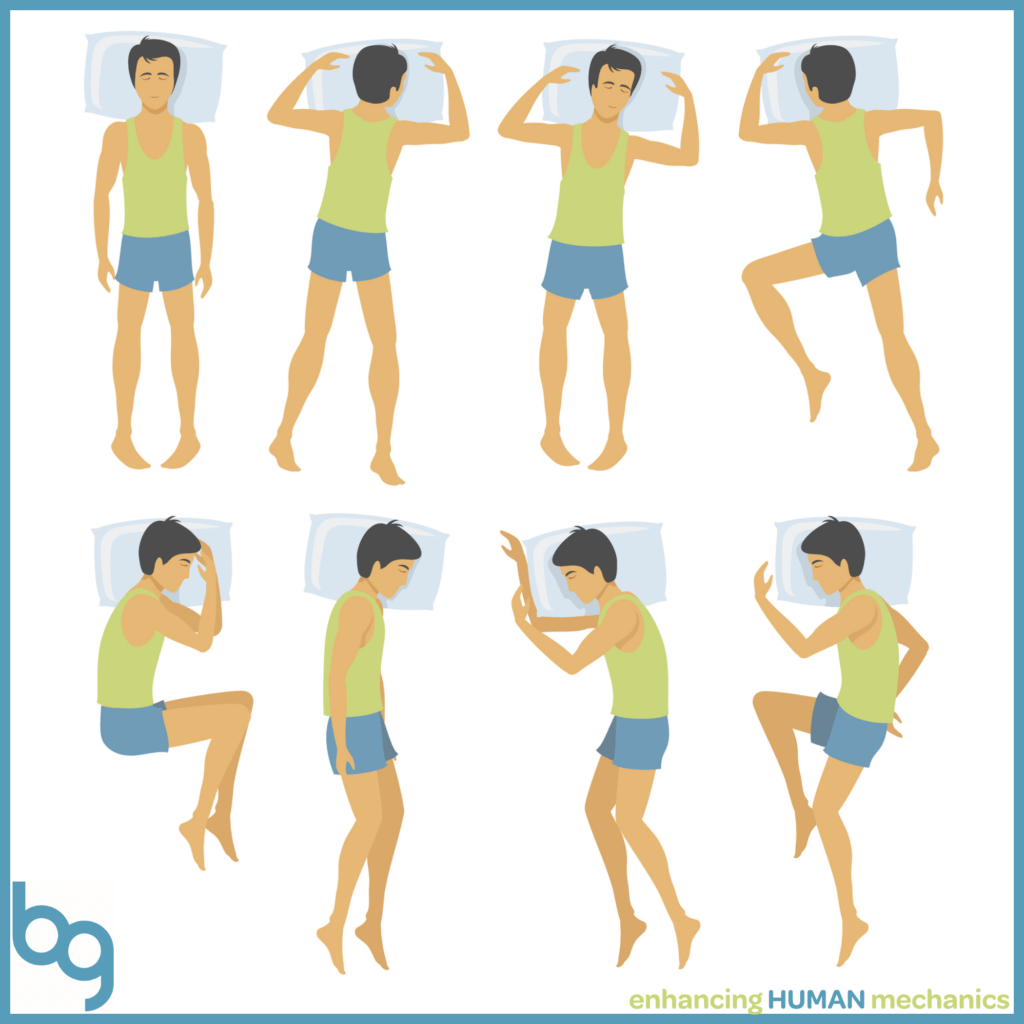We spend, on average, one-third of our lives sleeping. With so much of our time spent in bed, it is critical to maintaining good posture for these 8 hours every night to promote a both a good night’s rest and to decrease the chance of physical injury from chronic poor positioning. In this, pillows can be a valuable tool to for support!
Here are just a few methods of using pillows to help you keep optimal alignment through the night:
When Sleeping on Back
This is the ideal posture for sleeping, as you are resting in neutral alignment with the least amount of pressure on the spine. Additionally, when sleeping on your back, the diaphragm and thoracic cavity have greater room to move and expand so as to promote optimal respiration through the night. Pillows come in as they can be placed under your knees to relieve the tension on your lumbar spine caused by short hamstrings. The ideal method of doing this is to stack two pillows on top of each other, such that the top pillow overlaps half of the bottom pillow. This provides a smooth transition from the surface of the bed to the apex of the pillows.
When Sleeping on Side
If you are unable to sleep on your back comfortably, sleeping on your side is the next best option. A single pillow can be used here to create space and support your legs. Place a pillow between your legs, such that it goes from your thigh to your calf, supporting as much of your legs as possible.
When Sleeping on Stomach
While this sleeping posture may be comfortable for some individuals, it is the quickest way to promoting low back pain and impairing respiration during the sleeping hours, as it puts your lumbar spine in extension throughout the night and the bed limits the amount your diaphragm and ribs can move. Pillows can be a valuable tool in helping you transition from sleeping on your stomach to sleeping on your back. More often than not, what “stomach-sleepers” actually crave is the pressure on their abdomen, more than the posture of sleeping prone. To help transition from being a stomach sleeper to a back sleeper, you can take several pillows and hug them or let them rest on your abdomen while following the other methods stated above to promote optimal posture when sleeping on your back.
Of course, the best way to develop good sleeping posture is to have the support of a trained professional guiding your sleeping posture. If you have any questions or think your sleeping posture may be getting in the way with a good night’s sleep, be sure to come into Body Gears today for a Complimentary Functional Performance Screen! Our physical therapists are experts in helping ensure you get your 8 hours with ideal body mechanics!
If you liked this article please give us feedback and join the conversation. We would love to hear your suggestions on other science, anatomy, or movement topics you’d like to learn more about! Find us on Facebook, Instagram, SoundCloud, and Twitter @BodyGearsPT.






